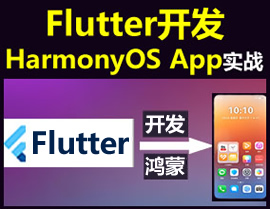HarmonyOS 鸿蒙Next怎么保存相机预览的textureId纹理映射到ImageReceiver
HarmonyOS 鸿蒙Next怎么保存相机预览的textureId纹理映射到ImageReceiver
const img: image.Image | undefined = await this.imageReceiver?.readNextImage()
const i = await img?.getComponent(image.ComponentType.JPEG)
if (img === undefined) {
return ‘’;
}
if (i?.byteBuffer) {
let width = img.size.width; // 获取图片的宽
let height = img.size.height; // 获取图片的高
let stride = i.rowStride; // 获取图片的stride
console.debug(
getComponent with width:${width} height:${height} stride:${stride});// 这里的stride与width结果不一致,stride:5888,width:1440
if (stride == width) {
} else {
// stride与width不一致,
这里换算有点问题,会超出索引,这里该如何改
const dstBufferSize = width * height * 1.5
const dstArr = new Uint8Array(dstBufferSize)
for (let j = 0; j < height * 1.5; j++) {
const srcBuf = new Uint8Array(i.byteBuffer, j * stride, width)
dstArr.set(srcBuf, j * width)
}
let pixelMap = await image.createPixelMap(i?.byteBuffer, {
size: { height: height, width: width },
srcPixelFormat: image.PixelMapFormat.RGBA_8888,
})
return pixelMap;
}
}
更多关于HarmonyOS 鸿蒙Next怎么保存相机预览的textureId纹理映射到ImageReceiver的实战系列教程也可以访问 https://www.itying.com/category-93-b0.html
在HarmonyOS鸿蒙系统中,保存相机预览的textureId纹理映射到ImageReceiver涉及到图像渲染和纹理管理的复杂操作。一般而言,这个过程可以通过以下步骤实现:
-
获取Texture ID:首先,你需要确保相机预览已经开始,并且能够成功获取到预览帧的
textureId。这通常涉及到使用相机相关的API接口。 -
创建ImageReceiver:在获取到
textureId后,你需要创建一个ImageReceiver对象,这个对象用于接收并显示图像纹理。 -
映射Texture ID到ImageReceiver:通过相应的API或方法,将
textureId与ImageReceiver进行绑定或映射。这通常涉及到图像渲染框架或UI框架提供的接口。 -
显示和保存:一旦映射成功,
ImageReceiver将能够显示相机预览的图像。如果需要保存该图像,可以通过进一步的图像处理或截图操作来实现。
需要注意的是,由于HarmonyOS的具体API和框架可能会随着版本更新而有所变化,因此建议查阅最新的HarmonyOS开发文档或API参考手册,以确保操作的正确性和有效性。
如果问题依旧没法解决请联系官网客服,官网地址是:https://www.itying.com/category-93-b0.html







